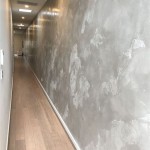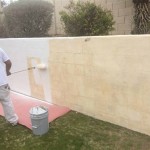Do Interior Walls Need Insulation?
Insulation is a critical component of any building, playing a vital role in energy efficiency, sound control, and fire safety. While exterior wall insulation is generally understood as essential, the necessity of insulation in interior walls is often questioned. This article will explore the various benefits and considerations related to insulating interior walls.
Sound Control
One of the primary reasons to insulate interior walls is to reduce noise transfer between rooms. Whether it's the television in the living room, music from a bedroom, or conversations in an office, unwanted noise can be disruptive and impact comfort and productivity. Insulation within interior walls acts as a sound barrier, absorbing and dampening sound waves, creating a more peaceful and private environment within each room. Different insulation materials offer varying levels of sound dampening performance. For optimal sound reduction, consider specialized acoustic insulation designed specifically for this purpose.
Thermal Regulation
While not as crucial as in exterior walls, interior wall insulation can contribute to thermal regulation within a home. It can help maintain consistent temperatures throughout the house, minimizing temperature fluctuations between rooms. This can be particularly beneficial in homes with rooms that are used infrequently or have specific temperature requirements, such as a guest room or a home office. By reducing heat transfer between rooms, interior wall insulation can help optimize the efficiency of heating and cooling systems, potentially leading to lower energy bills. This is particularly relevant in climates with significant temperature variations.
Fire Safety
Building codes often require insulation in interior walls to enhance fire safety. Certain types of insulation materials act as fire barriers, slowing the spread of flames and smoke between rooms in the event of a fire. This added protection can provide valuable time for occupants to evacuate and for emergency services to arrive. Fire-rated insulation is specifically designed to meet these safety requirements and is crucial for walls separating attached garages or dwelling units.
Types of Insulation for Interior Walls
Several insulation options are suitable for interior walls, each with its specific properties and benefits. Fiberglass batts are a common and cost-effective choice, offering good thermal and acoustic performance. Mineral wool, available in batts or loose-fill form, provides excellent fire resistance and sound dampening qualities. Spray foam insulation can effectively fill cavities and gaps, offering superior air sealing and insulation properties. Choosing the right type of insulation depends on the specific needs of the project, considering factors like budget, desired level of soundproofing, and fire safety requirements.
Installation Considerations
The installation process for interior wall insulation can vary depending on the type of insulation chosen and the existing wall construction. For new construction, insulation is typically installed before the drywall is applied. In retrofitting existing walls, insulation can be blown into wall cavities or installed through small access holes. Proper installation is crucial for ensuring optimal performance. It's essential to seal any gaps or air leaks to prevent heat transfer and maintain the integrity of the sound barrier.
Cost-Benefit Analysis
The decision to insulate interior walls should involve a cost-benefit analysis. Weighing the cost of materials and installation against the potential benefits of improved sound control, thermal regulation, and fire safety is crucial. Factors such as the climate, the layout of the house, and the occupants' sensitivity to noise should be considered. While there is an upfront cost associated with insulating interior walls, the long-term benefits in terms of comfort, energy savings, and safety can often justify the investment.
Regulations and Building Codes
Local building codes and regulations often dictate requirements for interior wall insulation, particularly concerning fire safety. It is essential to check local building codes and consult with professionals to ensure compliance before undertaking any insulation project. Meeting these requirements ensures a safe and compliant structure. These codes may specify the required fire rating and R-value of the insulation material.

Do You Insulate Your Interior Walls

How To Insulate The Interior Of A Wall

Is Internal Wall Insulation Worth Installing

A Comprehensive Guide To Internal Wall Insulation For Homes

Internal Wall Insulation Six Star Group

Internal Wall Insulation Solid For Homes

Insofast On Interior Walls Insulated Framing Panels

Walls With Interior Rigid Foam Greenbuildingadvisor

How To Insulate Walls Complete Guide Cavity Wall And Solid Insulation

How To Insulate A Basement Wall Greenbuildingadvisor
Related Posts








